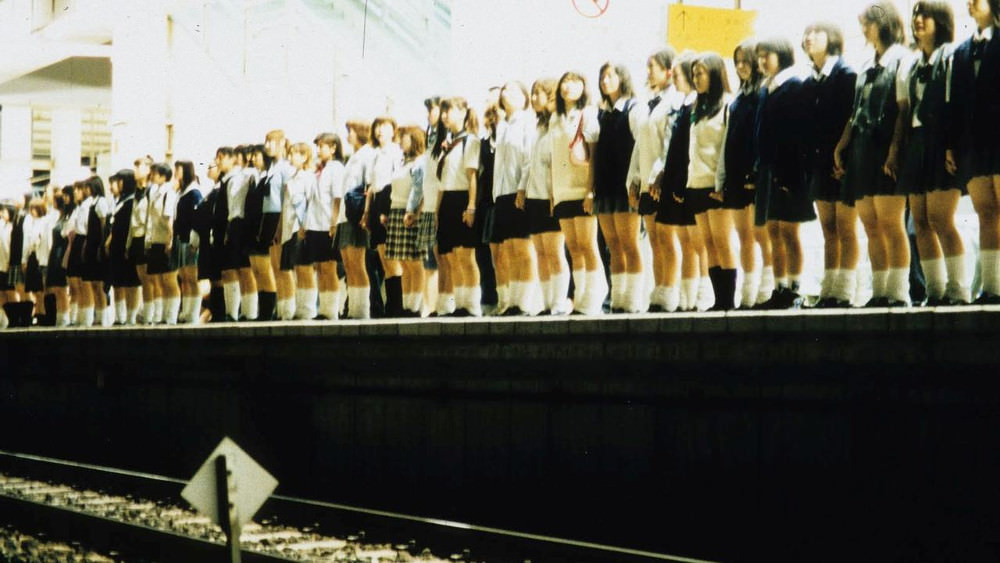Suicide Club


Japan
Suicide Club (Jisatsu Sākuru, 2001), sometimes translated as Suicide Circle, begins with 54 teenage schoolgirls in uniform collectively counting down from three before jumping to their deaths from a Shinjuku station platform in front of a rush hour train. The blood splatter that drenches screaming commuters establishes Suicide Club as a horror film willing to trade in camp humour. Directed and written by Sion Sono, Suicide Club combines horror, a detective investigation, and social commentary in a film that remains unresolved and opaque in its meanings.
The initial group suicide sparks a series of similar instances in Japan across the six days of the film’s plot. A group of students line-up and, holding hands, leap from the roof of a school building during their lunch break, while two nurses also jump from a hospital window. A sports bag containing sections of the victims’ skin stitched together is discovered on the Shinjuku train platform and the police begin to investigate whether the occurrences could be some form of organised murder. A hacker informs the police of a website that, through red and white circles, communicates the number of deaths before they happen, while coughing children phone the detectives with predictions about upcoming deaths. A subplot involves a sadistically violent glam-rock band who claim to be behind the phenomenon, while the music of a pop girl band variously named “Dessert/Desert/Dessart” features throughout the film, with lyrics hinting at possible explanations.
Suicide Club clearly flags Japan’s relatively high suicide rate, including among young people. Subsequent to the film’s release, intermittent concerns have been raised over suicide “clubs” and pacts established in online communities, resulting in group suicides (Harding 2004; Ozawa-de Silva 2008). A dominant theme of the film is emotional disconnection for contemporary individuals, from their families and from their authentic selves. Sono seems to satirise suicide as a fad, as well as pop culture that would present suicide as the solution to existential angst, while also presenting suicide as a rational response to cultural disconnection and as providing a form of interpersonal connection. Ultimately, Suicide Club leaves its mystery unresolved. This unknown parallels the generational divide which structures the film, where the adults investigating the deaths appear incapable of comprehending what might motivate groups of disaffected young people to vacate life and thus their transition into the adult world (Sélavy 2014). – Liam Grealy
Further reading:
– Harding, A. (2004). Japan’s Internet “suicide clubs”. BBC News. 7 December.
– Ozawa-de Silva, C. (2008). Too lonely to die alone: Internet suicide pacts and existential suffering in Japan. Culture, Medicine, and Psychiatry. 32(4): 516-551.
– Sélavy, V. (2014). Suicide Club. Electric Sheep Magazine. 11 May. http://www.electricsheepmagazine.co.uk/reviews/2011/05/24/suicide-club/